|
|
Below: Downtown Chattanooga Tennessee
and a walk-over bridge in front of the Aquarium. |
|
|
|
|
Below: A rock climbing wall
on the side of a building near the Tennessee Aquarium. |
|
|
 Ross
Landing in Chattanooga, Tennessee, is the site of the original
settlement of Chattanooga and is considered to be the embarkation point
of the Cherokee removal on the Trail of Tears. Ross Landing
Riverfront Park memorializes the location, which is listed
on the National Register of Historic Places. Ross
Landing in Chattanooga, Tennessee, is the site of the original
settlement of Chattanooga and is considered to be the embarkation point
of the Cherokee removal on the Trail of Tears. Ross Landing
Riverfront Park memorializes the location, which is listed
on the National Register of Historic Places.
It was named for John Ross, principal chief of the Cherokee Nation.
In 1816 Ross settled at the site along the Tennessee River above Chattanooga
Creek and established Ross Landing as a trading post.
In 1837 Cherokee removal to Indian Territory began and became known
as the Trail of Tears. The Cherokee were driven from their homes in
several southeastern states and were relocated at various camps, including
east of Ross Landing, for expulsion to Oklahoma. The name "Ross Landing"
was changed to Chattanooga by American settlers who took over the land
after Removal in 1838.
A pedestrian path connects Ross Landing Riverfront Park to the Tennessee
Aquarium. A wall along the walkway contains an art installation that
symbolizes the path that Cherokees followed on their forced relocation
to Oklahoma on the Trail of Tears. Created by Gadugi, a group of five
Cherokee artists from Oklahoma, the installation features seven large
carved and glazed clay medallions set into the walkway wall. The medallions
represent different aspects of Cherokee history, religious beliefs,
and struggles with white settlers. |
Ross Landing and the Tennessee
River as viewed from the top of the stairs. |
|
|
Below: Views of the Tennessee River from
Ross Landing |
|
|
Below: Time to descend the stairs - and
a sign on the wall |
STICKBALL, also known as "Little
Brother to War," is an ancient game played by native nations throughout
eastern North America. Playing fields often covered several miles and
participants were occasionally killed or severely injured. Cherokee
stickball was used to settle disputes between towns and other tribes.
Long ago the Cherokee obtained land in present day Georgia when they
defeated the Creeks in a monumental Stickball Game. Stickball is still
a part of religious ceremonies and used to settle certain issues. It
is an honor to play the game and survive! |
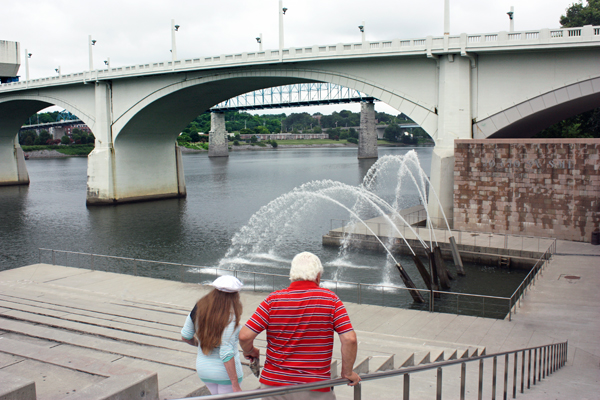 |
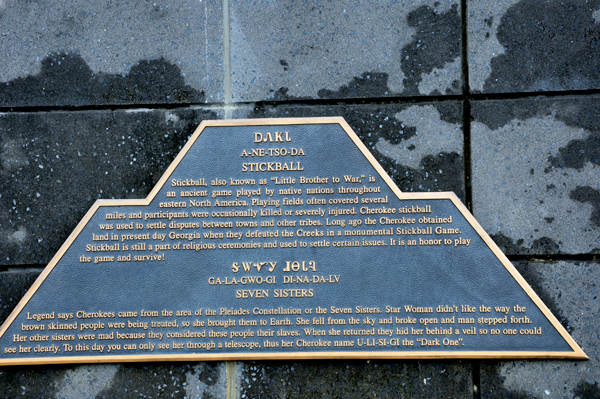 |
SEVEN SISTERS (as mentioned in the above
photo). Legend says Cherokees came from the area of the Pleiades Constellation
or the Seven Sisters. Star Woman did not like the way the brown skinned
people were being treated, so she brought them to Earth. She fell from
the sky and broke open and man stepped forth. Her other sisters were
mad because they considered these people their slaves. When she returned,
they hid her behind a veil so on one could see her clearly. To this
day you can only see her through a telescope, thus her Cherokee name
U-LI-SI-GI the "Dark One". |
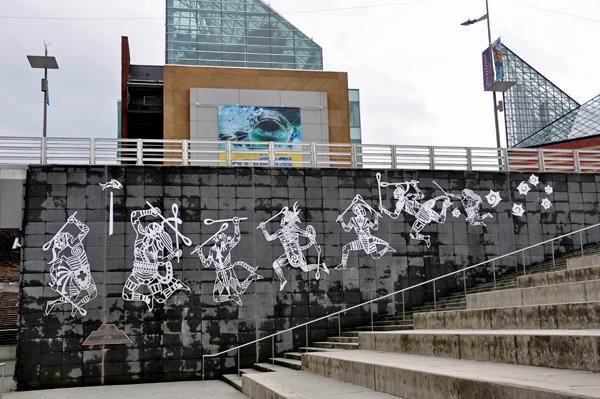 |
Below: Lee and Karen Duquette
and Ilse Blahak started down the stairs |
|
|
Below: After descending a lot of stairs, Ilse, Lee
and Karen took a brief walk along the Riverwalk to view the Tennessee
River.
Karen Duquette was always lagging behind and taking photographs. |
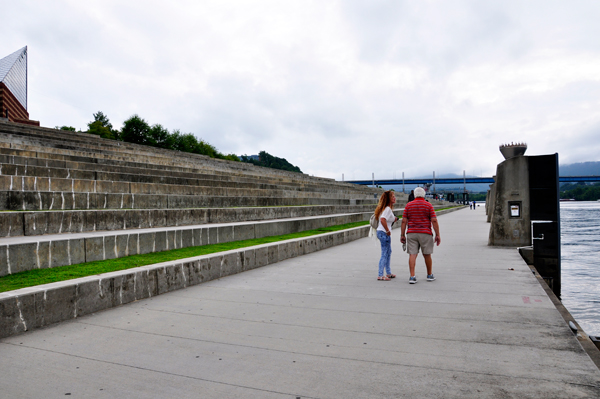 |
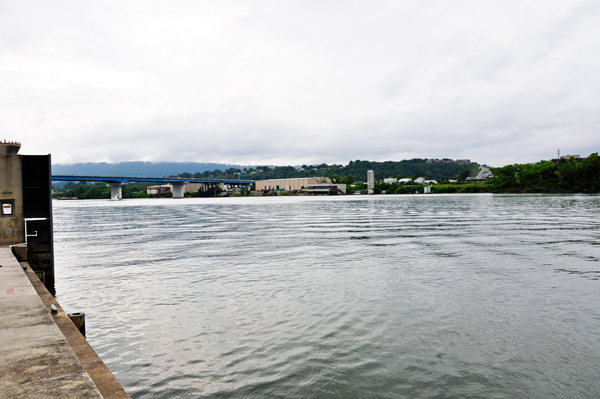 |
The fountain at Ross Landing. |
|
|
|
|
Below: The pool of water and the stairs with the cascading
water at Ross Landing. Great reflections on the ceiling. |
|
|
Below: A close up view of the stairs
with water flowing down them. |
|
Below: A few photos of the art designs
on the staircase wall. |
|
|
|
Karen
Duquette enjoyed walking in the water and then up the steps that had
cool water cascading downwards at Ross Landing at Riverfront Park. Lee
and Ilse walked up the adjoining dry set of stairs. |
|
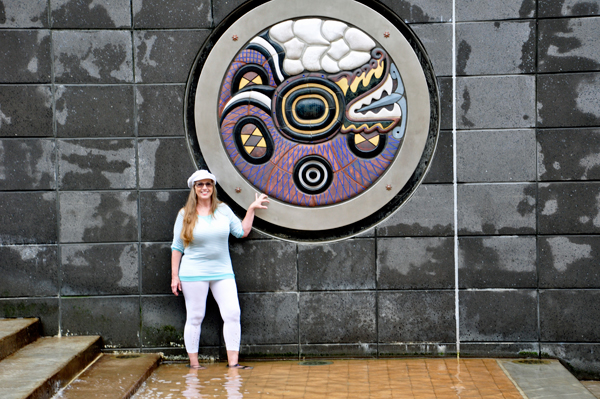 |
|
|
Below: Karen Duquette took a few photos
from the top of the stairs, looking down the cascading steps of water. |
|
|
Below: The source of the cascading water. |
|
|
Below: The Market
Street Bridge, officially referred to as the John Ross
Bridge, is a bascule bridge that spans the Tennessee River
between downtown Chattanooga, Tennessee, and the North shore District.
It was named in honor of Cherokee Chief John Ross. The bridge was completed
in 1917 at a cost of $1 million. The two RV Gypsies walked on the Market
Street Bridge for a view of The Tennessee River and the water cascading
down the steps. |
|
Below: Looking over the side of the bridge,
Karen Duquette photographed a person on a stand-up board paddles under
the water fountain. |
|
|
Public Art in Chattanooga |
|
|
|
|
|
|
|
Lee Duquette and Ilse Blahak on the
Ruth S. and A. William Holberg Pedestrian Bridge |
The two RV Gypsies
on the pedestrian bridge. |
|
|
Both outside edges of this
bridge is a see-through glass-bottom, so of course Karen Duquette took
photos looking straight down through the glass on the bridge. Ilse Blahak
would not walk on that part and scurried across the bridge by walking
on the solid part of the bridge. |
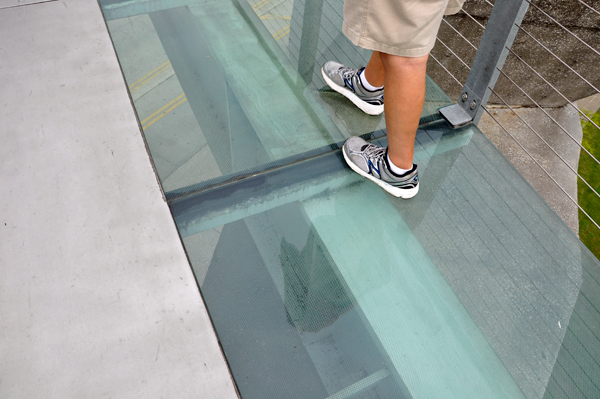 |
|
Cars passed under the bridge as the two
RV Gypsies walked across it. |
|
Below: Perched on an 80-foot
bluff on the edge of the Tennessee River, the Hunter Museum of American
Art offers stunning views of the river and the surrounding mountains.
This panorama is equaled only by the exceptional collection of American
art inside which is recognized as one of the country's finest. |
|
|
|
|
|
|
|
BELOW: Statue of Lindy-Hop dancers: The background
was so busy, so Karen Duquette turned the background to black and
white so the dancers could be seen better. She does not like to mess
with pictures too often.
|
|
|
Bronze statues of ball players,
titled "Full Count" |
|
|
|
Below: Lee Duquette got in on the baseball
action. |
|
|
|
|
A great zig-zagging staircase
which reminded the two RV Gypsies of the street in San Francisco. |
|
|
|
Below: Lunch time at a nearby park - Ilse
and Karen took a picture of each other, while Lee Duquette prepared
the lunch. |
|
|
|


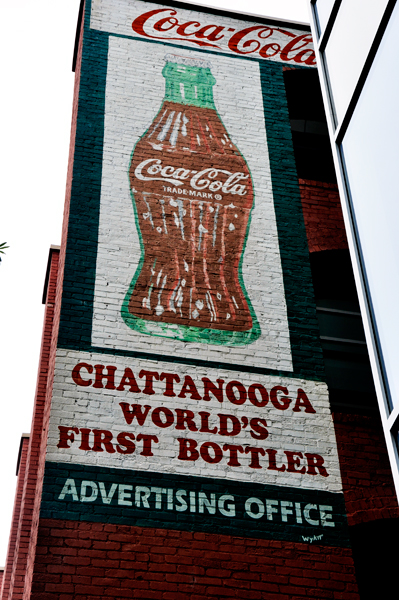

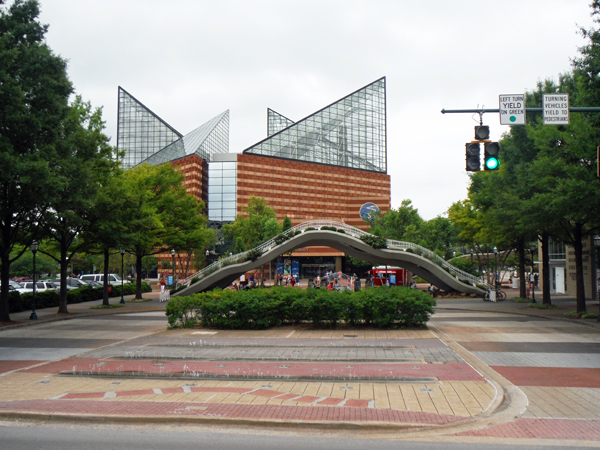
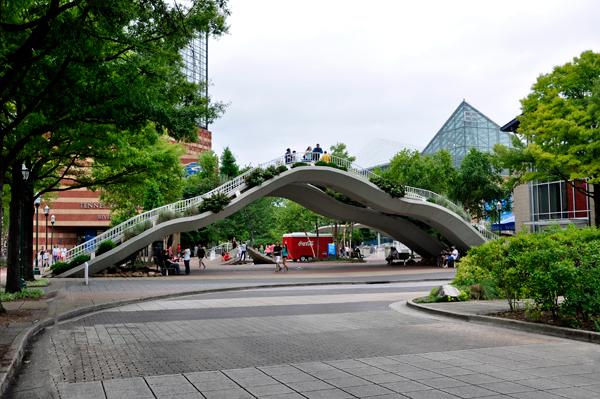
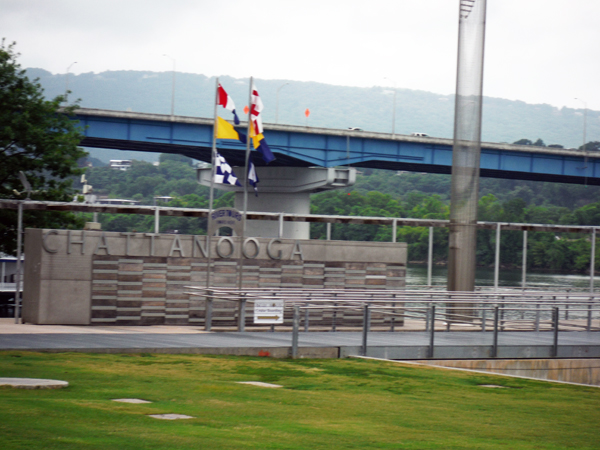

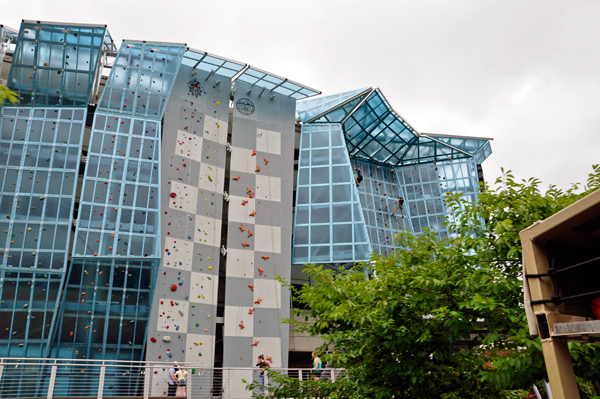
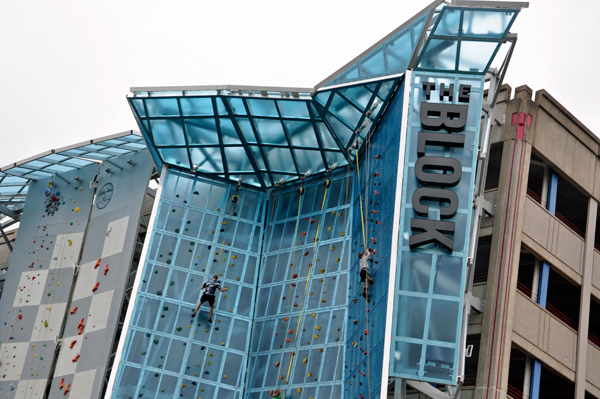

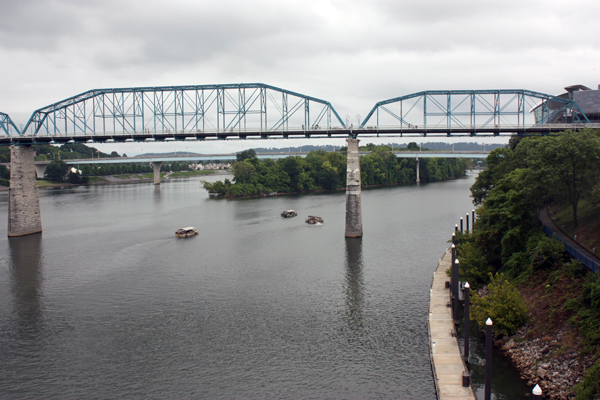





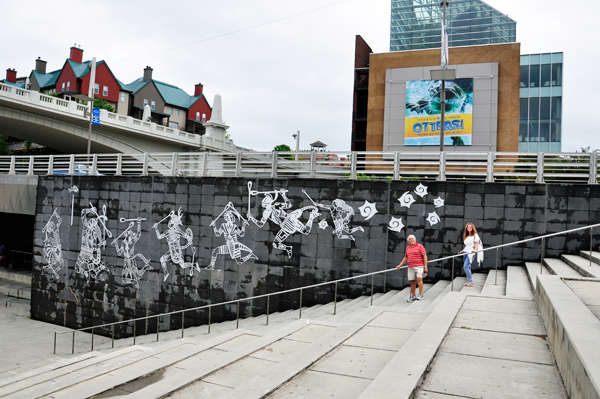



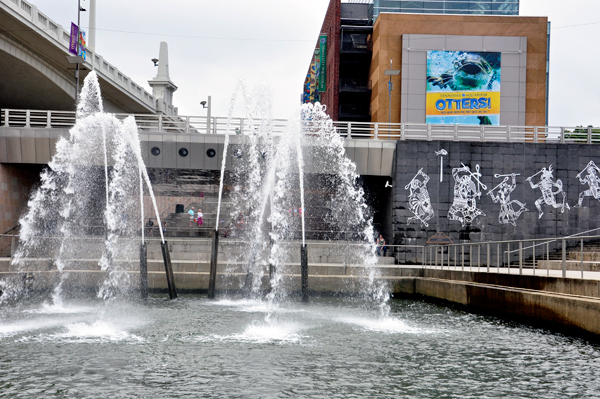
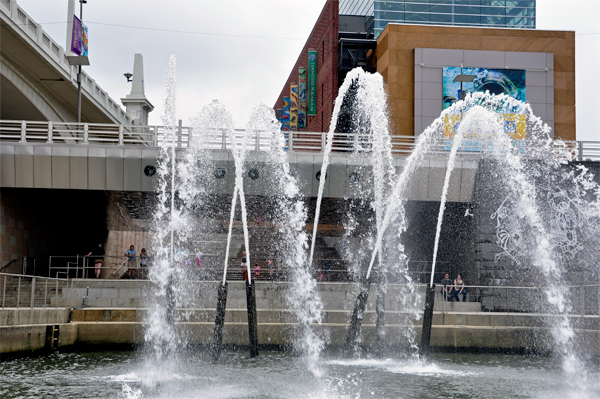
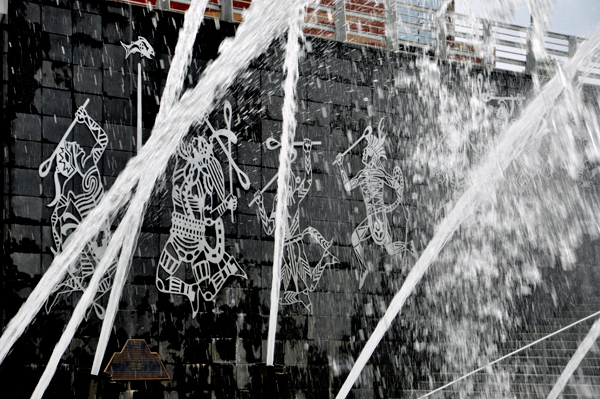

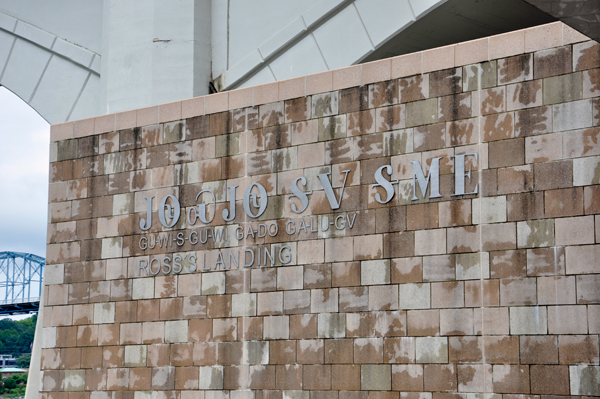
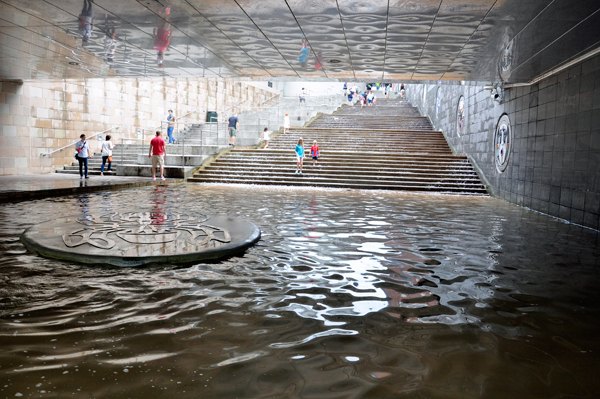




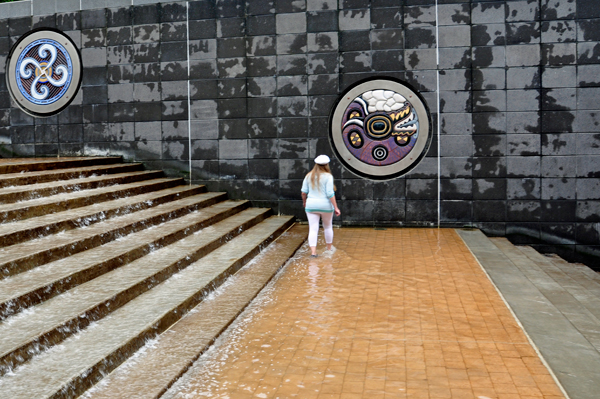

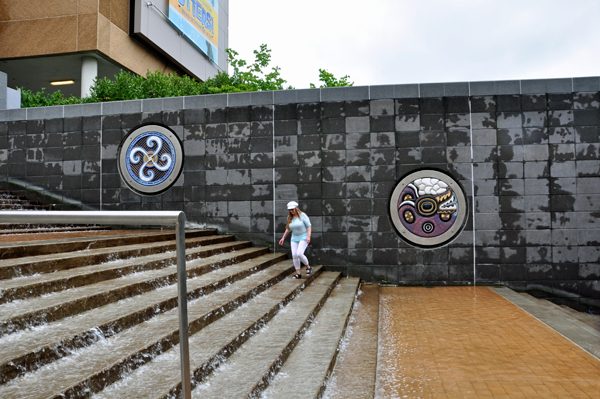
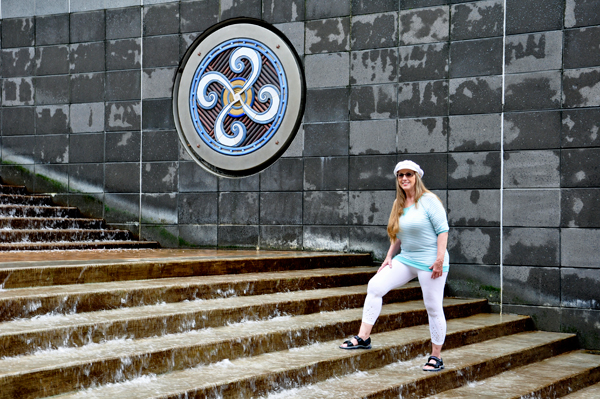


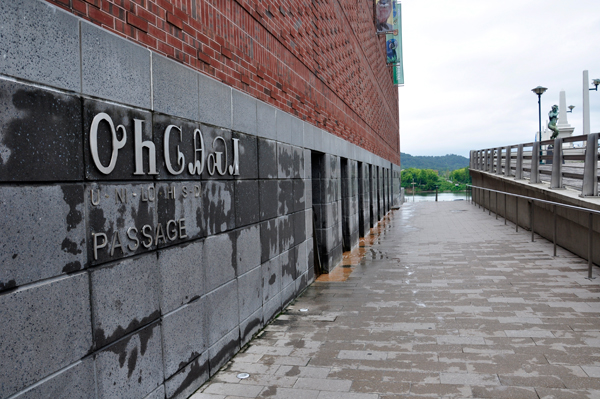
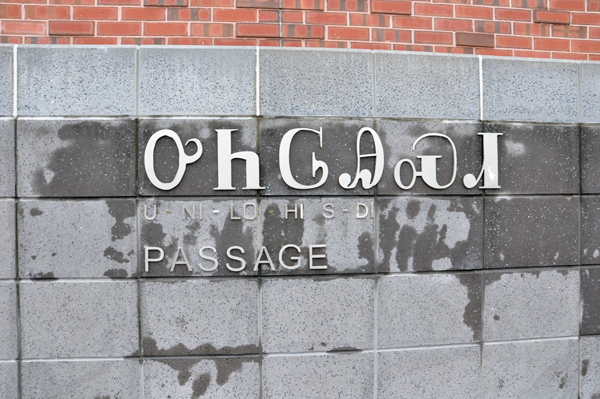
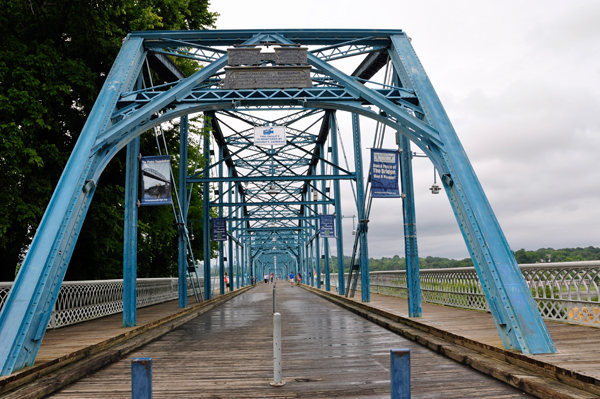
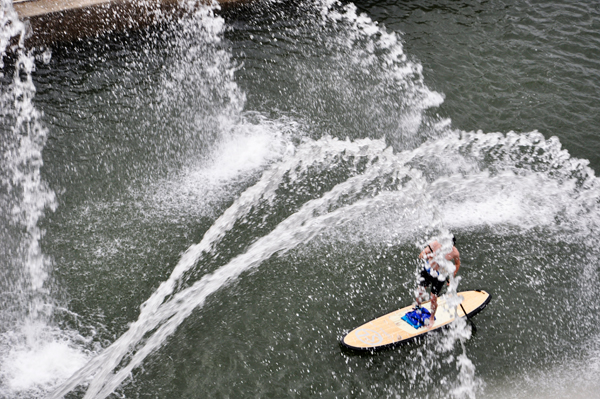
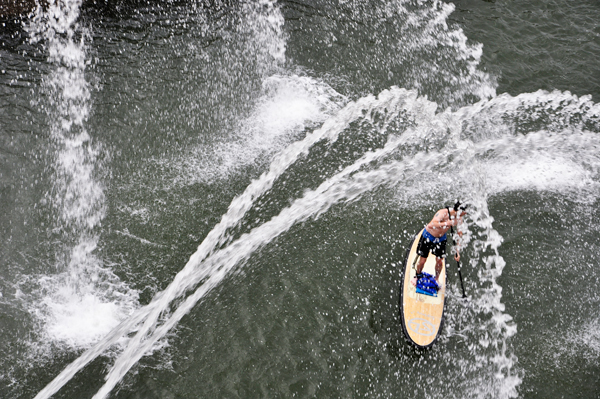
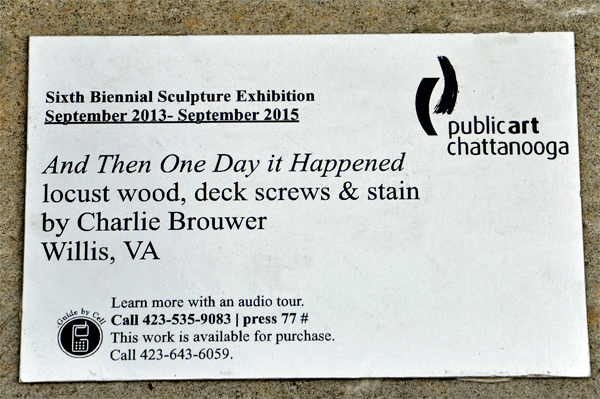
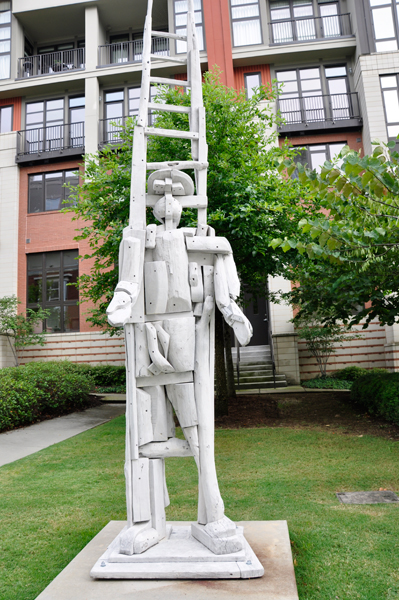
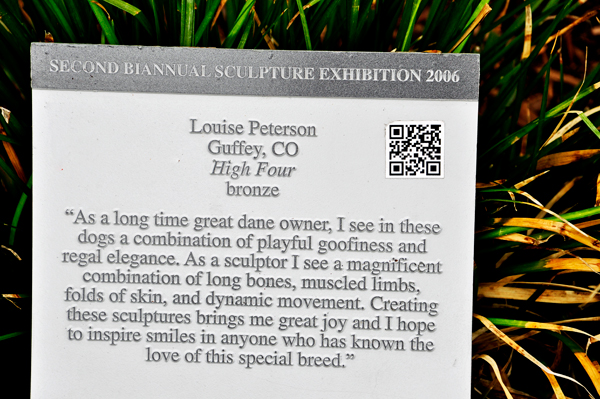
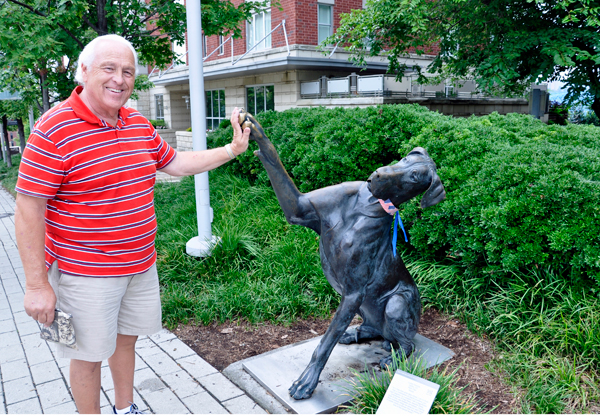


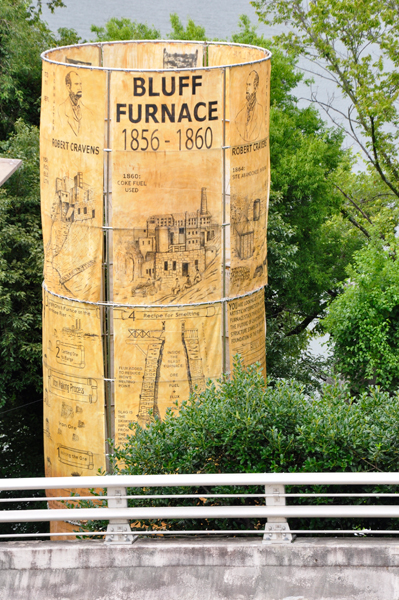
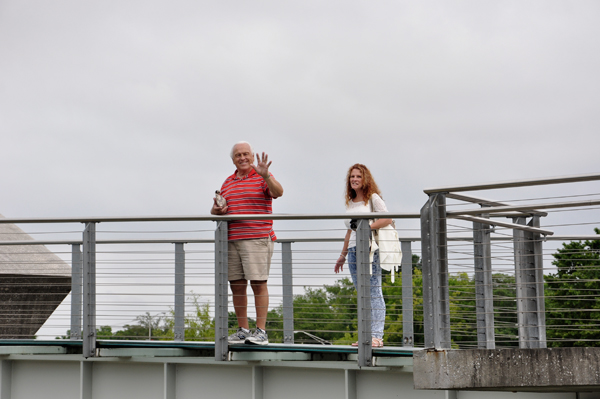


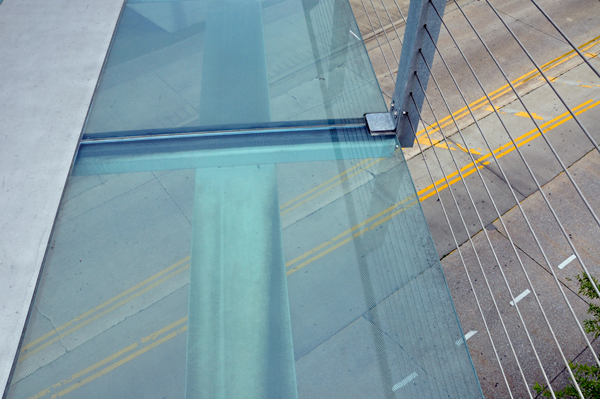
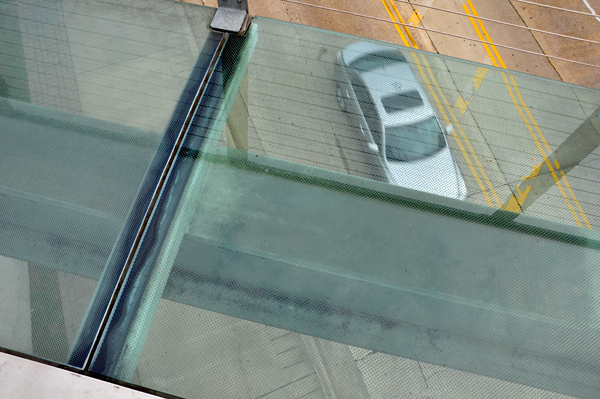
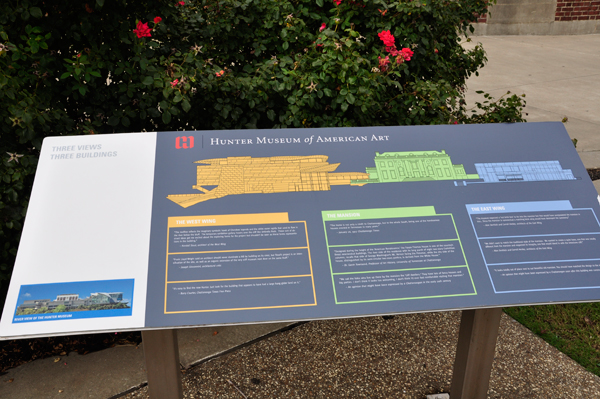
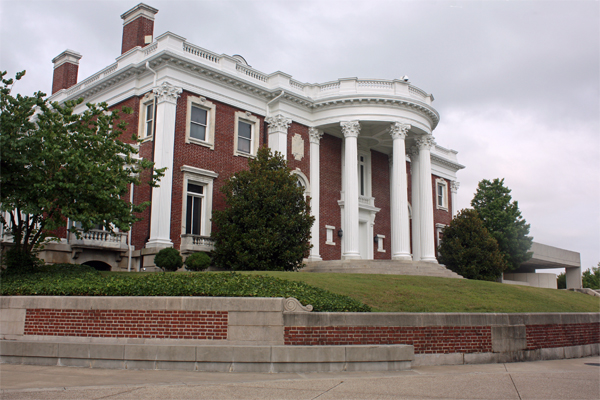
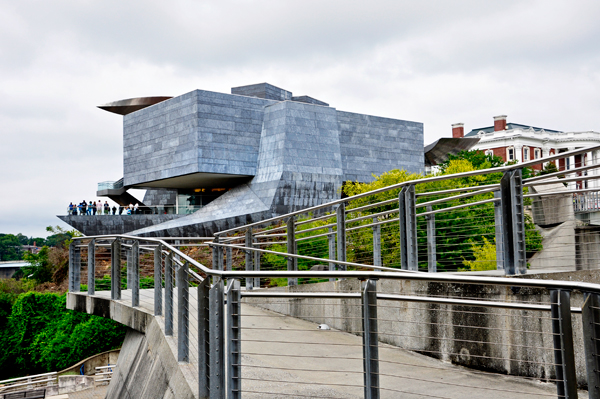

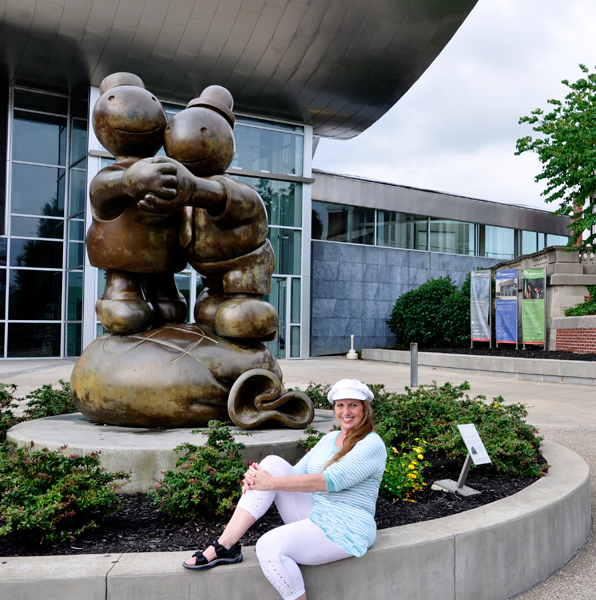
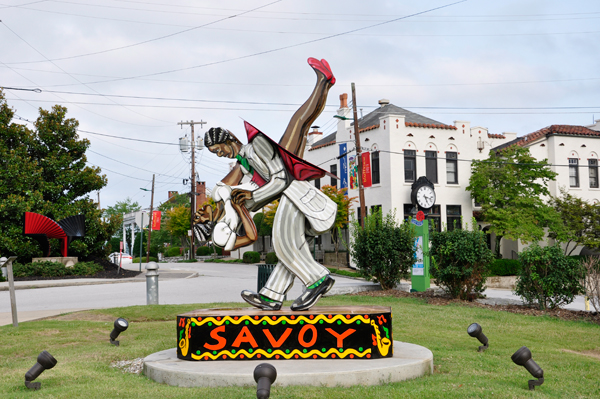
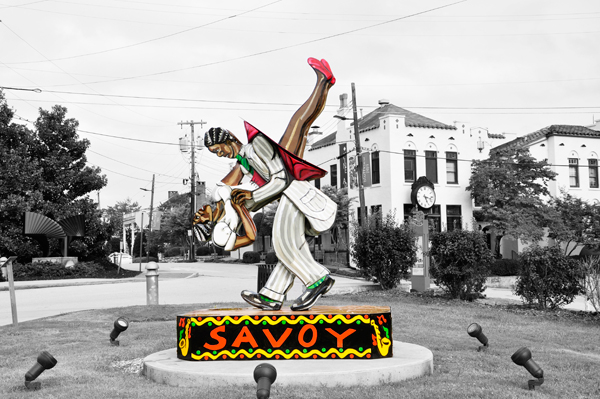

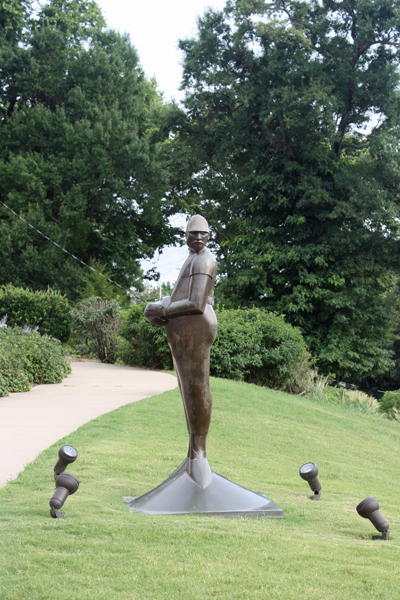

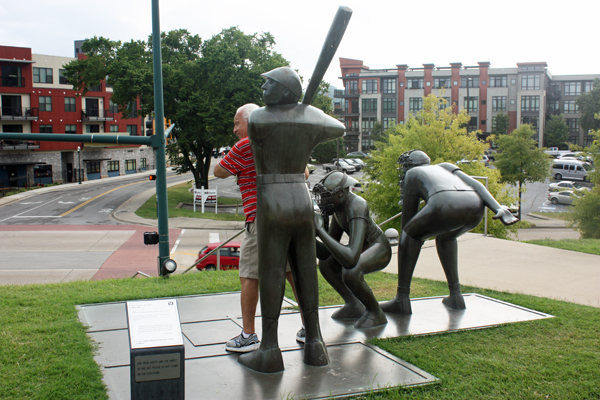
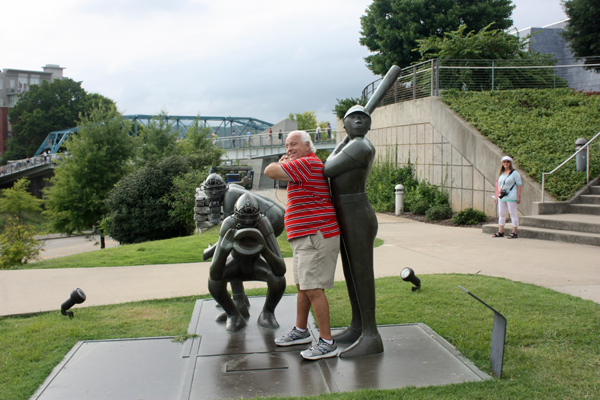

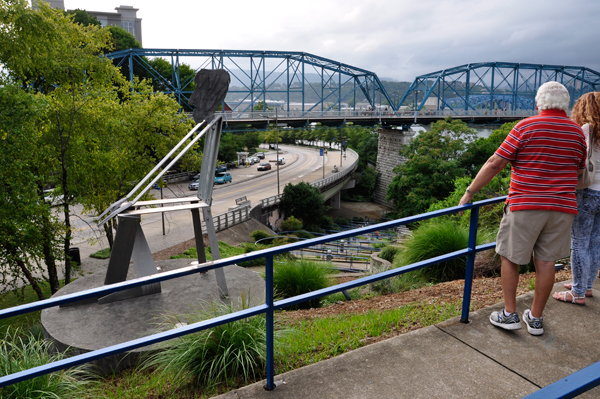



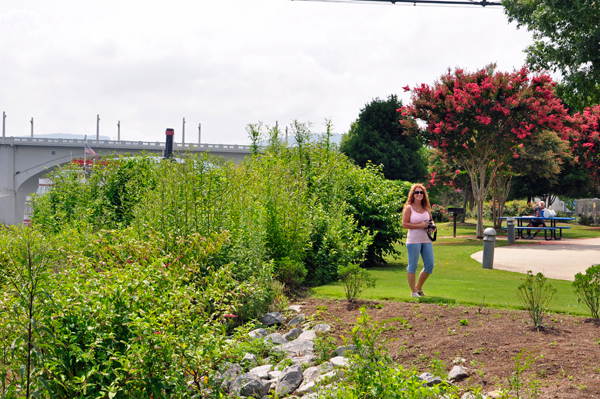
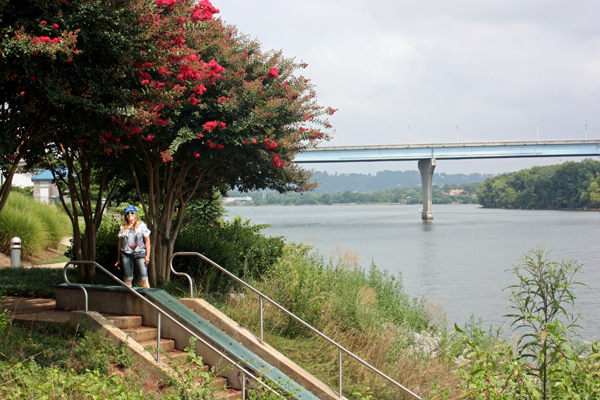
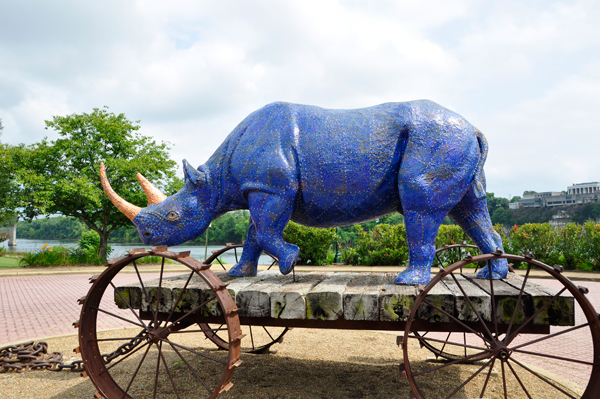























 Ross
Landing in Chattanooga, Tennessee, is the site of the original
settlement of Chattanooga and is considered to be the embarkation point
of the Cherokee removal on the Trail of Tears. Ross Landing
Riverfront Park memorializes the location, which is listed
on the National Register of Historic Places.
Ross
Landing in Chattanooga, Tennessee, is the site of the original
settlement of Chattanooga and is considered to be the embarkation point
of the Cherokee removal on the Trail of Tears. Ross Landing
Riverfront Park memorializes the location, which is listed
on the National Register of Historic Places.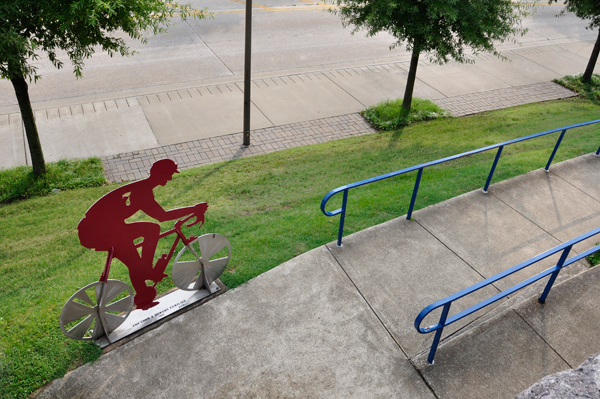
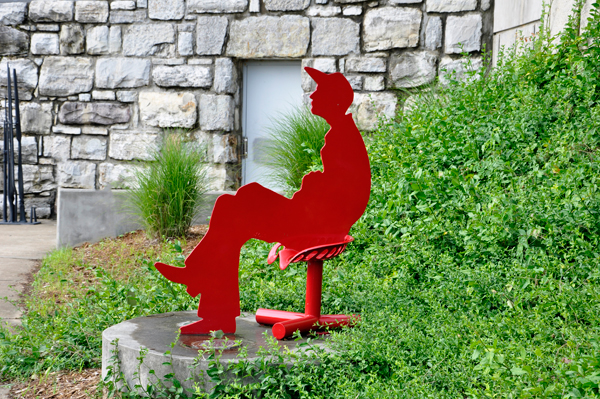

 AFTER
you have enjoyed all eight (8) sections, above, please continue on to
the
AFTER
you have enjoyed all eight (8) sections, above, please continue on to
the 
